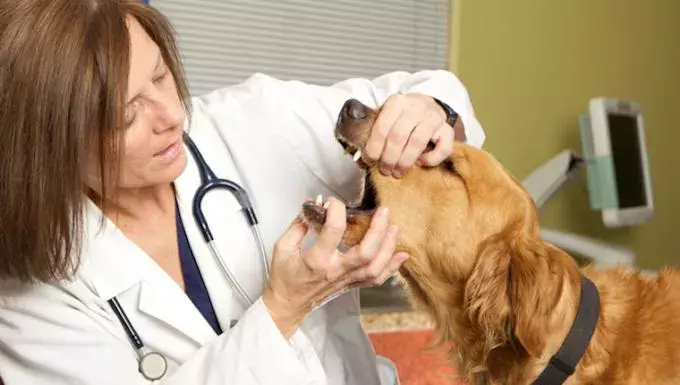Gingival fibrosarcoma represents a particular and concerning instance of oral cancer that predominantly impacts the gum tissues in dogs. While this condition can affect any dog regardless of breed or age, it appears most frequently in older dogs—particularly those over the age of seven and a half. Interestingly, male dogs are statistically more susceptible than their female counterparts, which raises questions about the underlying biological or hormonal factors at play. This article aims to provide comprehensive insight into the nature of gingival fibrosarcoma, its symptoms, potential causes, and available treatment options.
Identifying gingival fibrosarcoma early is vital for effective treatment. Pet owners should remain vigilant for several common signs that may indicate the presence of this type of cancer. Notable symptoms include:
– **Drooling**: An increase in drooling can signify discomfort or oral health issues, including tumors.
– **Bad Breath**: Foul odors emanating from the mouth can often be a precursor to dental issues or tumors.
– **Difficulty Eating**: If a dog is experiencing pain while trying to eat, it may be an indication of tumor growth impacting the mouth.
– **Weight Loss**: A noticeable decline in weight may suggest a loss of appetite related to oral pain.
– **Growths in the Mouth**: The most direct signs include unusual lumps or growths observed in the gum tissue.
– **Oral Bleeding**: Any blood originating from the mouth should be treated as a serious symptom.
– **Loose Teeth**: Dental stability may be compromised as fibrosarcomas can affect the underlying bone structures.
– **Swollen Lymph Nodes**: Lymphadenopathy can indicate that the cancer is spreading or that there’s an underlying infection.
Given the range of symptoms, any indication that something is amiss should prompt immediate veterinary consultation.
While the exact origins of gingival fibrosarcoma remain elusive, several factors are suspected to contribute to its development. Notably, age plays a significant role, as older dogs seem to have higher odds of developing this cancer. Other potential contributors include:
– **Previous Radiation Exposure**: Dogs that have undergone radiation treatment for other conditions may be at increased risk.
– **Infections**: Chronic infections in the mouth or periodontal disease could potentially escalate the risk of tumors.
– **Chemical Exposure**: Prolonged exposure to certain chemicals may influence the likelihood of developing fibrosarcomas.
Although the Golden Retriever breed tends to manifest this condition more frequently compared to others, it ultimately underscores the need for awareness across all breeds.
A confirmed diagnosis of gingival fibrosarcoma typically involves several steps that your veterinarian will follow. Initially, the veterinarian will inquire about your dog’s symptoms and any relevant events that may have occurred before symptom onset. A thorough physical examination will follow, focusing particularly on the oral cavity to identify any abnormal growths.
The definitive diagnosis relies on a biopsy of the affected area, which helps in assessing the extent of the tumor and planning treatment. Treatment approaches can vary according to the tumor’s size and severity. Options include:
– **Surgical Removal**: For localized tumors, surgical excision is often the first line of defense.
– **Cryosurgery**: This technique utilizes extreme cold to eliminate small tumors, effectively freezing them off.
– **Radiation Therapy**: In cases of larger or more aggressive tumors, radiation may be recommended as supplementary or primary treatment.
Recovery can involve dietary adjustments—soft or wet food may be necessary to help your pet eat comfortably. Pain management is critical during this phase, so veterinarians often prescribe medications to ease discomfort. Adhering to the prescribed dosage and treatment schedule is crucial to ensuring a smooth recovery.
Gingival fibrosarcoma in dogs poses serious health challenges, but with early intervention, pet owners can improve their dogs’ chances of recovery. By observing symptoms and maintaining regular veterinary check-ups, you can contribute significantly to your pet’s well-being. As always, relying on your veterinarian’s expertise will guide you through the process of managing this condition effectively. The love and care you provide during this difficult time can make a significant difference in your dog’s quality of life.

